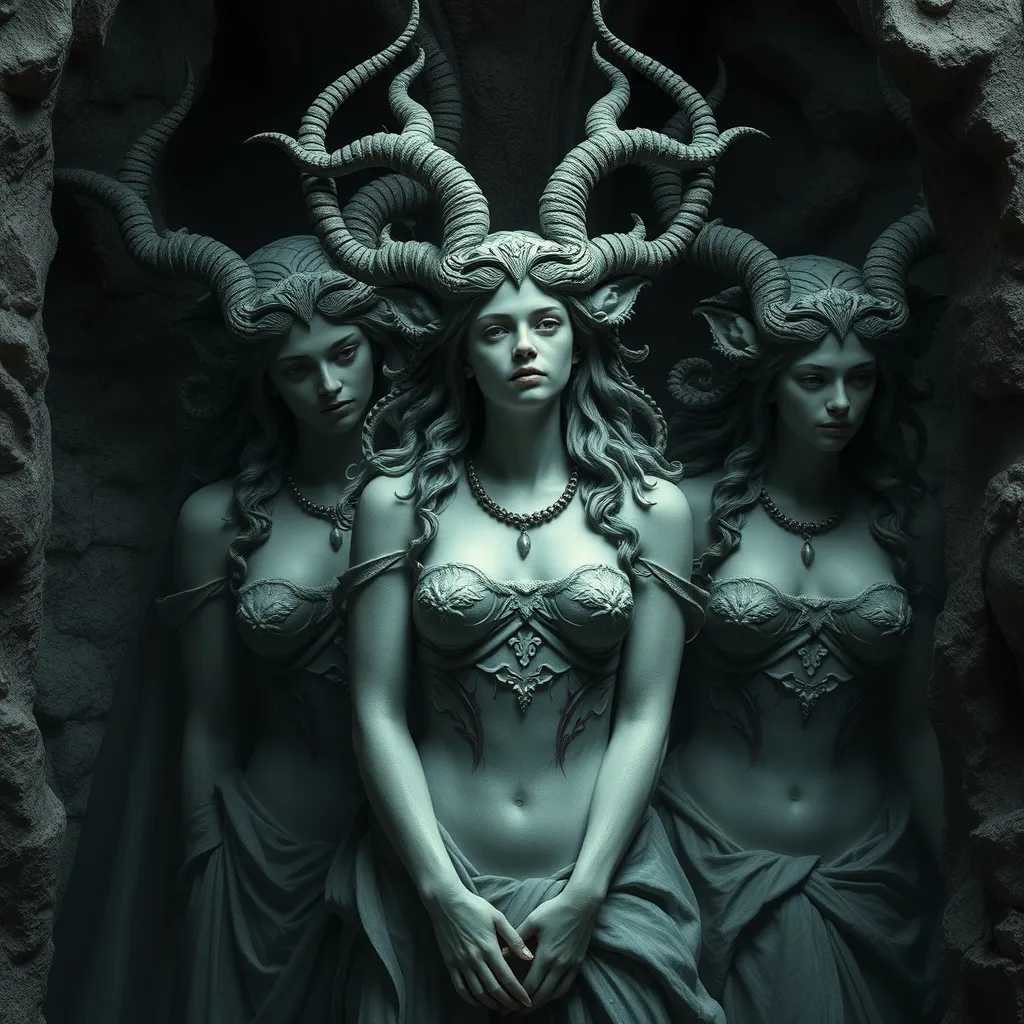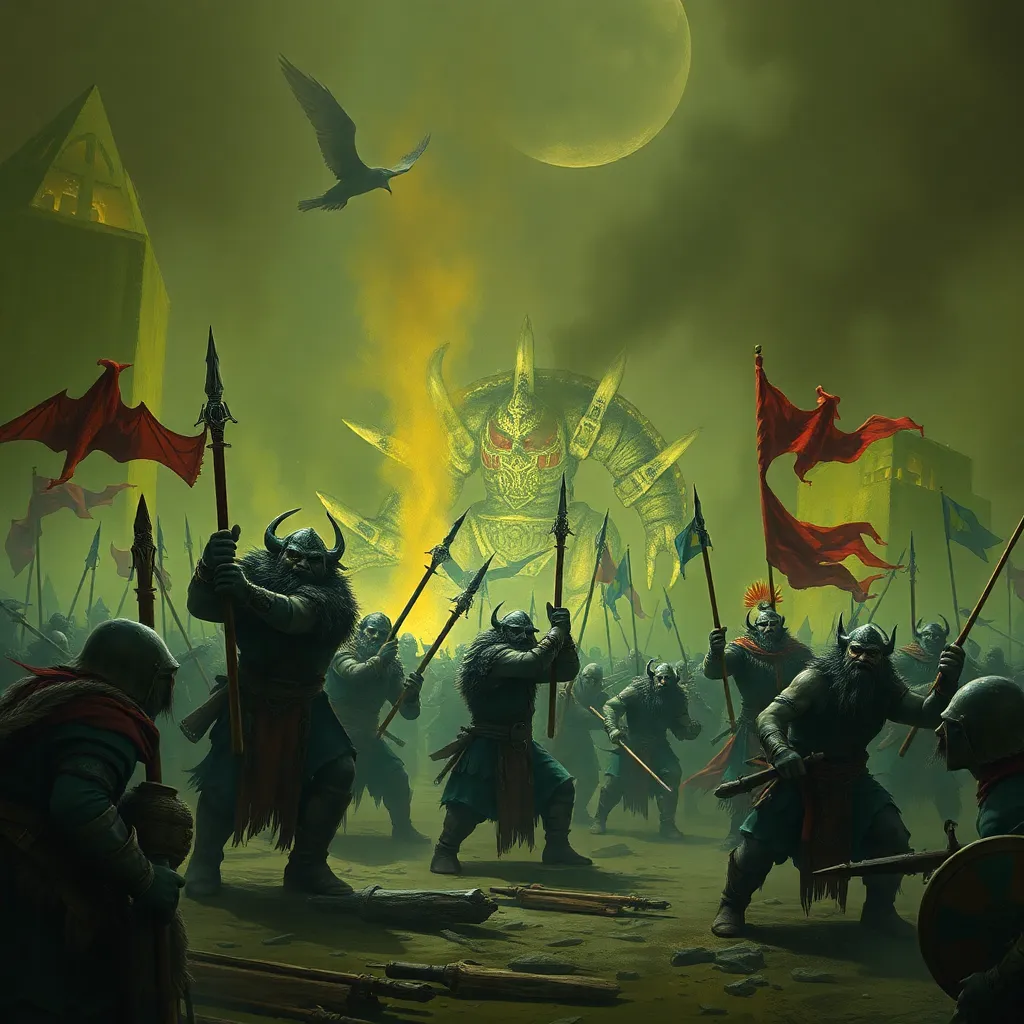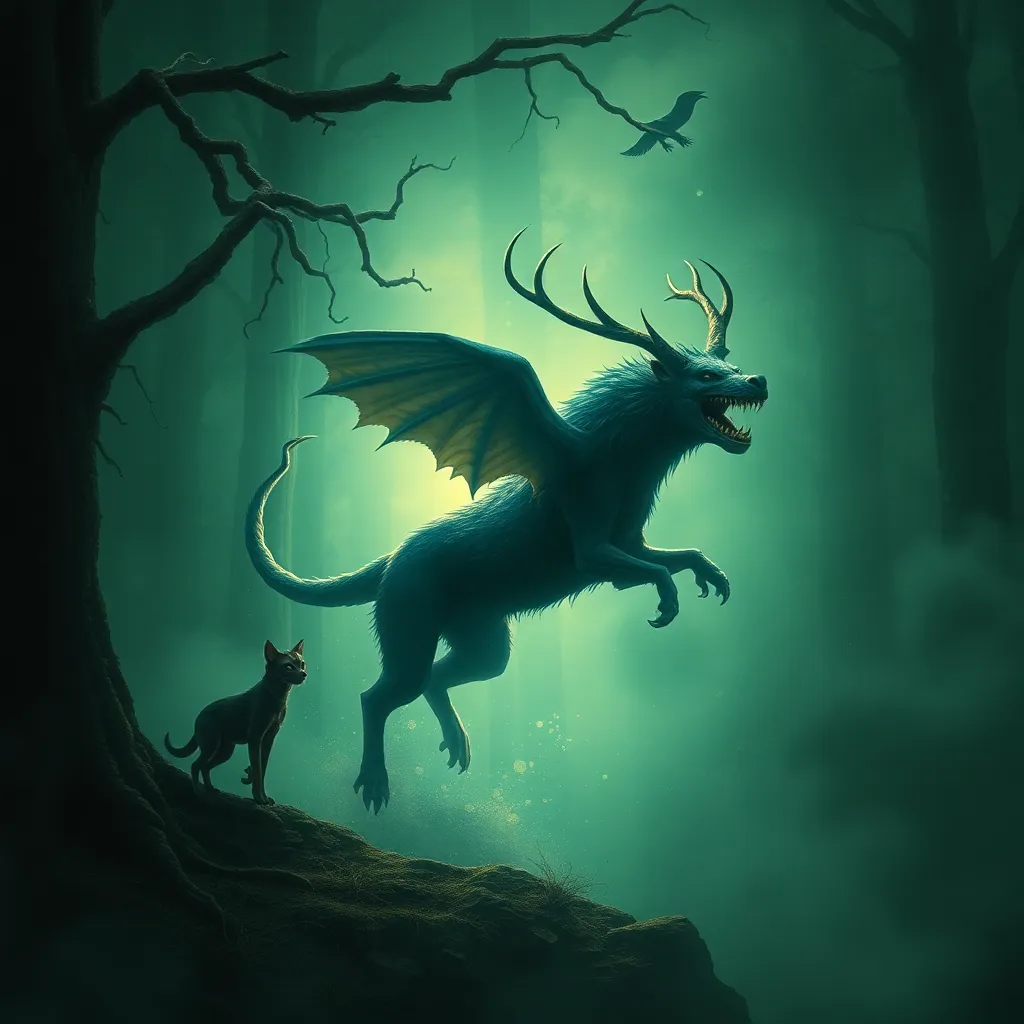The Nymphs of the Underworld: Exploring the Lore of Persephone and Hecate
I. Introduction
Greek mythology is rich with tales of gods, goddesses, and mystical beings, among which nymphs hold a special place. These female spirits of nature are often depicted as beautiful and ethereal, embodying the essence of the natural world. Among the most significant figures associated with the underworld are Persephone and Hecate, both of whom play crucial roles in the myths surrounding life, death, and rebirth.
The purpose of this article is to delve into the complex lore surrounding Persephone and Hecate, exploring their significance in the underworld and their connections to the nymphs of mythology.
II. The Myth of Persephone
A. The Abduction by Hades
Persephone, the daughter of Demeter, the goddess of agriculture, was famously abducted by Hades, the god of the underworld. As she picked flowers in a meadow, Hades emerged from the ground in his chariot and took her to the underworld, an act that would forever alter her existence.
B. The Role of Demeter, Persephone’s Mother
Demeter, devastated by the loss of her daughter, searched the earth for her. In her despair, she withdrew her gifts from the world, leading to a barren landscape and the cessation of growth, which impacted humanity profoundly. This myth symbolizes the deep bond between mother and daughter, and the consequences of their separation.
C. The Duality of Persephone: Maiden and Queen of the Underworld
Persephone embodies duality; she is the maiden who experiences life above ground and the queen who rules the underworld. This duality highlights themes of transformation, as her journey from innocence to power reflects the cyclical nature of life and death.
III. Hecate: The Goddess of Magic and the Underworld
A. Origins and Attributes of Hecate
Hecate is a complex goddess often associated with magic, witchcraft, and the night. She is depicted as a three-headed figure, representing her dominion over the past, present, and future. Her origins are debated, with associations ranging from ancient Anatolian deities to Greek chthonic spirits.
B. Hecate’s Connection to the Underworld and the Night
As a goddess of the underworld, Hecate serves as a guide for souls transitioning to the afterlife. She is intimately connected to magic and the mysteries of the night, often invoked in rituals aimed at invoking her protective and transformative powers.
C. The Symbolism of Hecate in Mythology
- Guide to the Lost: Hecate is often seen as a protector of those who wander, guiding them through dark paths.
- Guardian of the Threshold: She symbolizes the boundaries between the worlds, both physical and spiritual.
- Symbol of Feminine Power: Hecate represents the empowerment of women through knowledge and magic.
IV. The Relationship Between Persephone and Hecate
A. Hecate as a Guide to Persephone
In the mythological narrative, Hecate plays a pivotal role in guiding Persephone during her time in the underworld. As a figure of wisdom and magic, Hecate offers support and companionship to Persephone, acknowledging her struggles and transformation.
B. The Role of Hecate in Persephone’s Journey
Hecate’s presence in Persephone’s life is significant as she aids in the reconciliation of Persephone’s dual existence. This relationship illustrates how the goddess of magic can empower Persephone, allowing her to embrace her role as both maiden and queen.
C. Thematic Connections: Transformation and Rebirth
Their connection emphasizes themes of transformation and rebirth, as both figures embody the cyclical nature of life. Together, they reflect the journey of growth, loss, and empowerment, representing the balance between darkness and light.
V. The Nymphs: Spirits of Nature and the Underworld
A. Definition and Characteristics of Nymphs
Nymphs are mythological spirits associated with various natural elements, often depicted as beautiful maidens. They inhabit locations such as rivers, mountains, and forests, symbolizing the vitality and beauty of nature.
B. Nymphs in Relation to Persephone and Hecate
The nymphs play a significant role in the narratives of Persephone and Hecate, often depicted as companions or symbols of the natural world impacted by Persephone’s abduction. Their sorrow mirrors Demeter’s grief, highlighting their connection to the cycles of nature.
C. The Role of Nymphs in Underworld Myths
In underworld myths, nymphs often serve as guides or guardians of sacred spaces, bridging the worlds of the living and the dead. They embody the essence of life even in the depths of darkness, connecting themes of fertility and death.
VI. Cultural Interpretations and Representations
A. Artistic Depictions of Persephone and Hecate
Throughout history, Persephone and Hecate have inspired countless artistic representations, from ancient pottery to modern sculptures. Artists often focus on their duality, portraying Persephone as both a vibrant maiden and a somber queen.
B. Influence on Literature and Popular Culture
The myths surrounding Persephone and Hecate have permeated literature and popular culture, influencing works from classical texts to contemporary novels and films. Their stories are often revisited to explore themes of empowerment, loss, and transformation.
C. Modern Interpretations of the Myth
Today, interpretations of Persephone and Hecate reflect contemporary issues, such as feminism and the reclamation of power. These reinterpretations provide new insights into their roles as symbols of resilience and agency.
VII. Thematic Analysis of the Lore
A. Themes of Life, Death, and Rebirth
The tales of Persephone and Hecate are deeply intertwined with the themes of life, death, and rebirth. Persephone’s journey represents the transition between these states, while Hecate embodies the wisdom that comes from navigating these experiences.
B. The Intersection of Nature and the Underworld
The relationship between the nymphs, Persephone, and Hecate emphasizes the intersection of nature and the underworld. This connection highlights the belief that the natural world is intrinsically linked to the cycles of life and death.
C. Feminine Power and Agency in Mythology
Both Persephone and Hecate exemplify feminine power and agency, challenging traditional narratives. Their stories encourage a reevaluation of women’s roles in mythology, showcasing their strength and influence.
VIII. Conclusion
A. Summary of Key Points
In conclusion, the lore of Persephone and Hecate reveals a rich tapestry of themes related to transformation, empowerment, and the natural world. Their stories, intertwined with those of the nymphs, highlight the importance of these figures in Greek mythology.
B. The Enduring Legacy of Persephone and Hecate
The enduring legacy of Persephone and Hecate continues to resonate, inspiring new interpretations and artistic representations. Their narratives encourage exploration of the complexities of life and the empowerment found within transformation.
C. Final Thoughts on the Nymphs of the Underworld and Their Significance
Ultimately, the nymphs of the underworld, along with Persephone and Hecate, serve as vital symbols of the natural world and the mysteries it holds. Their significance transcends time, reminding us of the interconnectedness of life, death, and rebirth.



